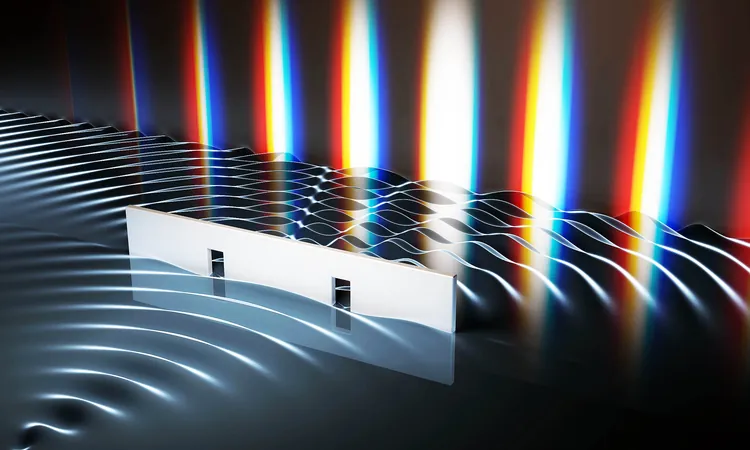
Revolutionary 'Dark Photon' Theory Could Revolutionize Quantum Physics
2025-05-13
Author: Jessica Wong
Breaking Down Over 100 Years of Quantum Understanding
For centuries, scientists have been captivated by the duality of light, recognizing it as both a wave and a particle. This foundational concept birthed the realm of quantum mechanics. The iconic double-slit experiment has long been celebrated for showcasing this duality, illustrating the intricate dance of light through patterns of interference. But what if it’s time to reconsider everything we thought we knew?
A Game-Changing Discovery
Emerging from groundbreaking research led by Gerhard Rempe at the Max Planck Institute for Quantum Optics, a team of experts is challenging the established notions of light. They propose that we could decode the interference patterns not just with wave theory, but through the lens of quantum particles alone.
The Evolution of Light Theory
Historically, Thomas Young's 1801 experiments painted light as a wave, while a century later, the dawn of quantum mechanics revealed electrons behaving similarly to light waves. Einstein’s work on the photoelectric effect and Niels Bohr’s insights into wave-particle duality solidified these ideas as pillars of modern physics.
Introducing Dark Photons
The research highlights a fascinating concept of 'bright' and 'dark' photon modes. This novel approach posits that interference patterns arise not solely from waves mingling but from interactions of detectable and undetectable photon states. Here’s the twist: the so-called dark photons may reside where we expect zero light interference, covertly influencing observations.
Rethinking Quantum Interference
Rempe emphasizes that this novel interpretation provides a quantum perspective to classical interference phenomena. In essence, maxima and minima shift in response to the entanglement of bright and dark particle states, thus complicating our traditional understanding.
What This Means for Future Physics
This new model doesn't dismiss previous findings but adds layers to our understanding of interference. Significant historical debates about the nature of light, involving titans of science like Newton and Einstein, may now unfold anew under this framework.
A Shift Towards Particle-Centric Understanding
Where classical physics adequately explains daily optical experiences, quantum optics presents challenges that mere wave theories struggle to address. With this fresh lens, light’s wave-like fringes could very well be reflections of statistical behavior among bright and dark quantum states, reshaping our comprehension in the process.
The Future of Photon Detection
This groundbreaking paradigm may even lead to innovative detection techniques in realms previously deemed voids. Experimental physicists are eager to search for elusive photons residing in dark states, potentially birthing new methods to observe light interactions without biasing measurements.
Challenging Conventional Wisdom
As researchers continue to probe these new theories, the implications ripple across numerous fields, including gravity and matter wave experiments. Critics caution that while wave-based models still function effectively in many scenarios, the dark photon theory’s necessity shines brightest at the single particle and atomic scale.
The Quest for Light’s True Essence
This research ignites curiosity about other foundational scientific principles that may also bend under quantum inquiry. As physicists explore these new horizons, the future of quantum mechanics could be brimming with possibilities.
Published in the prestigious journal Physical Review Letters, this work marks a pivotal moment in our understanding of the very nature of light itself.


 Brasil (PT)
Brasil (PT)
 Canada (EN)
Canada (EN)
 Chile (ES)
Chile (ES)
 Česko (CS)
Česko (CS)
 대한민국 (KO)
대한민국 (KO)
 España (ES)
España (ES)
 France (FR)
France (FR)
 Hong Kong (EN)
Hong Kong (EN)
 Italia (IT)
Italia (IT)
 日本 (JA)
日本 (JA)
 Magyarország (HU)
Magyarország (HU)
 Norge (NO)
Norge (NO)
 Polska (PL)
Polska (PL)
 Schweiz (DE)
Schweiz (DE)
 Singapore (EN)
Singapore (EN)
 Sverige (SV)
Sverige (SV)
 Suomi (FI)
Suomi (FI)
 Türkiye (TR)
Türkiye (TR)
 الإمارات العربية المتحدة (AR)
الإمارات العربية المتحدة (AR)